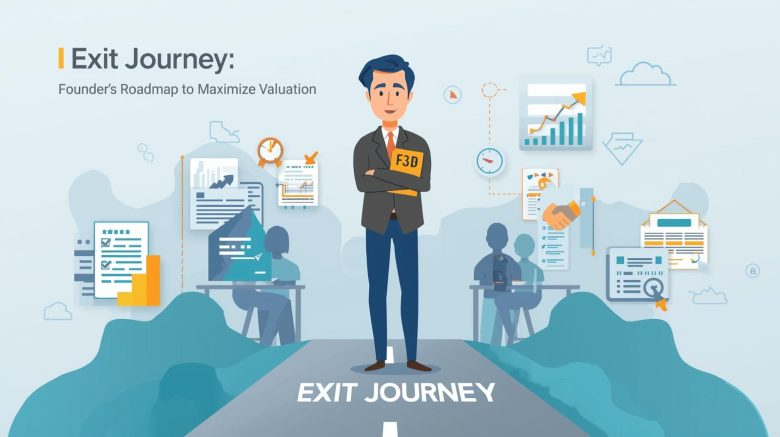16-Points to Boost your Exit Valuation (Part II)
You’ve built your firm from scratch, delivered projects across geographies, and perhaps now you’re thinking: “If I ever exit, what’s this business really worth?”
Valuation is part art, part science. But more importantly, valuation is something you can influence—if you prepare ahead. Based scores of deal conversations, negotiations and closures driven by Ecosystem Ventures M&A team, we prepared a hands-on guide for Indian IT services founders on how to prepare to optimize their valuations.
Part-I covered the background, valuation methodologies and the 16 Key Factors to boost one’s valuation. In this concluding Part-II, ESV team has added remaining notes on the subject.
6–12 Month Preparation Checklist for Founders
Here’s a practical roadmap to get “deal ready.”
| Focus Area | Actions to Take |
| Financials | Prepare clean, audited books; remove one-off expenses; standardize revenue recognition |
| Client / Contract Documentation | Ensure all contracts, renewals, SLAs are in place and documented |
| Operational Metrics | Start tracking utilization, billing realization, bench, attrition, project budgets |
| Legal & Compliance | Resolve any lawsuits, ensure IP ownership, verify compliance in SEZ/STPI policies |
| Leadership & Succession | Groom second-line leadership; document roles & responsibilities |
| Founder Transition Plan | Draft your own 2–3 year employment or advisory agreement to reassure buyer |
| Story & Pitch | Create a 20–30 slide “investment memo” – why buy you, risk mitigation, growth path |
You don’t want to enter a negotiation with sloppy books or unresolved legal tangles. Buyers will use every uncertainty to discount your value.
How Buyers Might Structure the Deal
A valuation is only part of the deal. Here’s how buyers often layer in risk mitigation:
- Upfront cash + Earn-Outs / Milestones: part of the deal is locked in to post-transaction performance.
- Retention / Holdback: a portion of the purchase price may be held for a period (6–24 months) to guard against surprises.
- Escrow / Indemnity Reserves: to cover liabilities or breaches uncovered later.
- Equity Rollover: you may be asked to reinvest part of your proceeds into the new entity, to maintain alignment.
Your goal is to maximize the certain / upfront portion and avoid over-dependence on contingent payouts, however, many times this is not possible due to buyer preferences. Ecosystem Ventures M&A team has deep expertise in figuring out the right balance in such situations.
Common Mistakes Founders Make & How to Avoid Them
- Waiting too late — Once you lose momentum (e.g. lose a client, flat growth), your valuation multiples collapse.
- Over-optimistic projections — Don’t promise hypergrowth with skinny evidence. Buyers will stress test and discount.
- Poor structuring of earn-outs — Too aggressive targets or unrealistic KPIs lead to friction.
- Neglecting cultural & people risks — Clients or employees leave post-acquisition if not managed well.
- DIY Approach to deal-making – M&A deals are super-complex, with hundreds of ways one can leave money on the table without realizing it, potential risks and very nuanced expectation management with the acquirer. Get an expert M&A firm specializing in tech deals – you’ll thank yourself later!
Final Thoughts & Next Steps
- Start 12–18 months before you plan to exit: the best deals come when you have time to fix and polish.
- Work your valuation levers: reduce concentration, deepen leadership, build recurring revenue, and clean up governance.
- Run a mock diligence — have advisors or outsiders challenge your books, contracts, contracts, client risks.
- When you go to market, tell a compelling story (not just a “financial pitch”) that ties together your traction, tech edge, roadmap, and mitigation of risks.


Comments are closed.